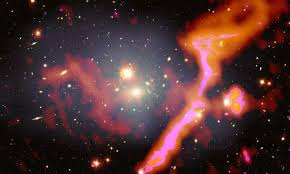More than 200 astronomers from 18 countries have developed a new radio telescope and used it to study space, as it was previously not possible. LOFAR, the name of the device, stands for Low-Frequency Array. Behind it hides the world’s first fully digital radio telescope, which precisely registers even extremely weak signals from the cosmos. In a range of 10 to 240 MHz. “That was completely impossible before in this wavelength range,” Dr. Matthias Hoeft from the Karl Schwarzschild Observatory, which is involved in the project.
LOFAR is not an antenna, but a huge European network of radio antennas. Two of them are at the Karl Schwarzschild Observatory. And with all of them together, astronomers have just taken millions of shots, collected tons of data (the equivalent of ten million DVDs), and made a new map of the universe out of it. They discovered hundreds of thousands of new galaxies that were previously unknown because they are extremely distant and their radio signals travel billions of light-years away until they reach Earth.
With their measurements of cosmic magnetic fields, the researchers have already been able to prove that the space between the galaxies is not empty, but has magnetic structures. In addition, the investigations of the black holes showed that they are present in all galaxies and emit all matter rays, so-called huge jets.
A special issue of Astronomy & Astrophysics has published 26 papers with first results. They are based on only about two percent of LOFAR’s planned observations. The scientists now want to map the entire northern celestial sphere. They expect to find around 15 million radio sources.



